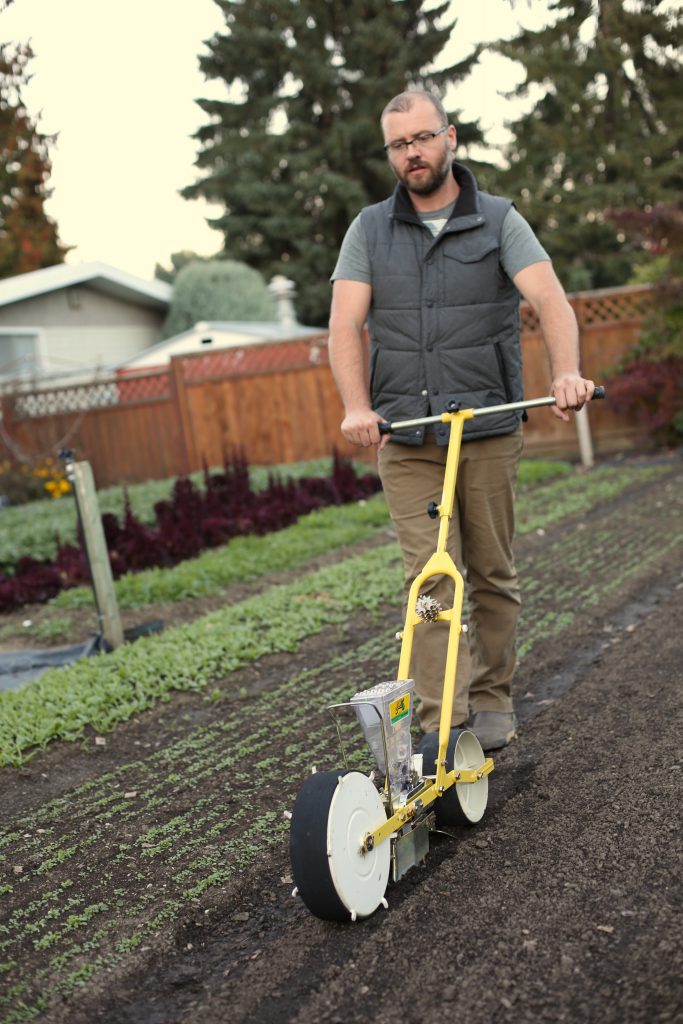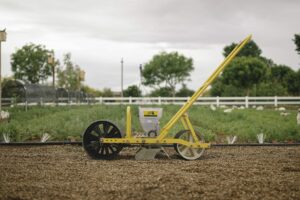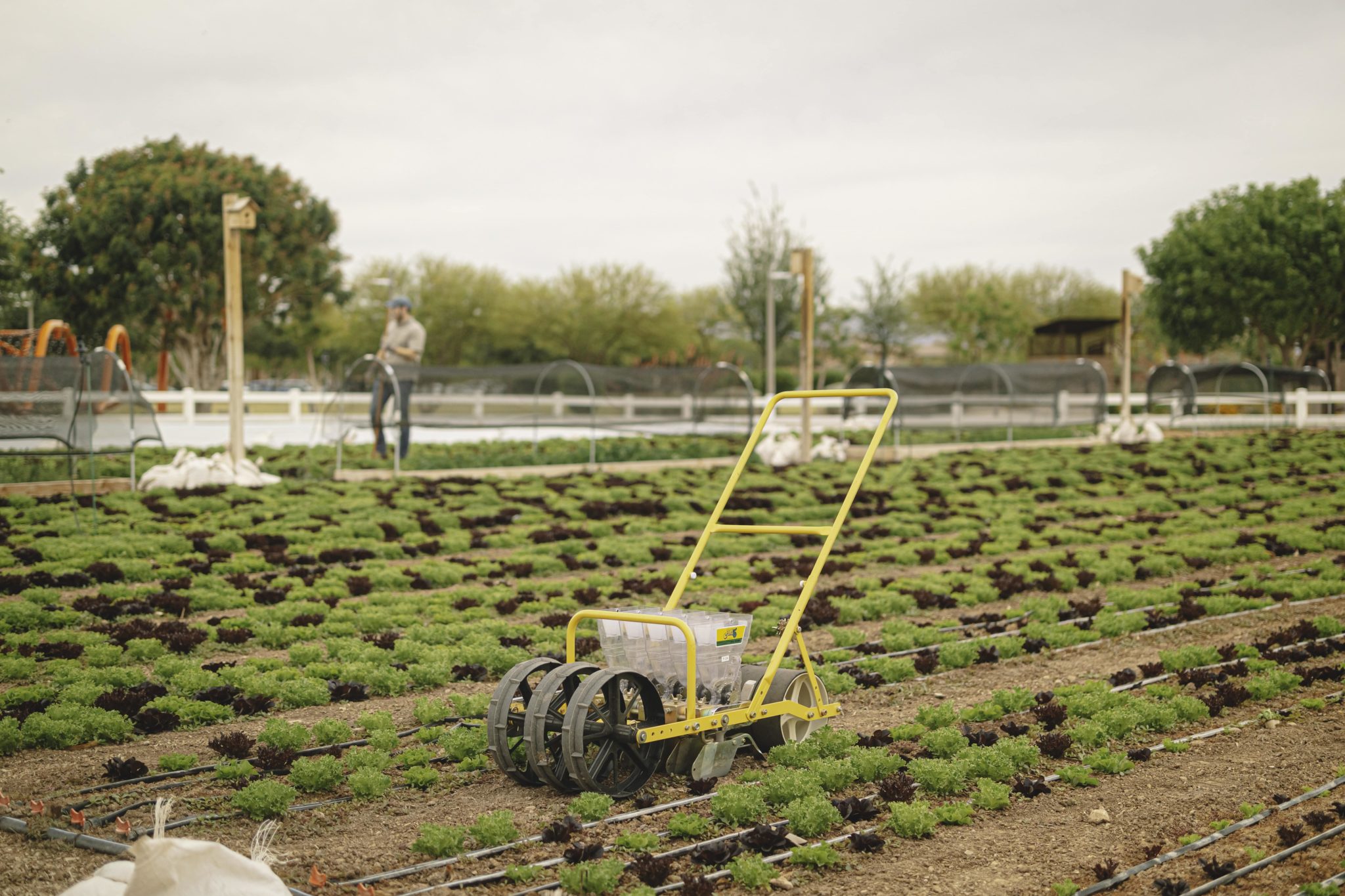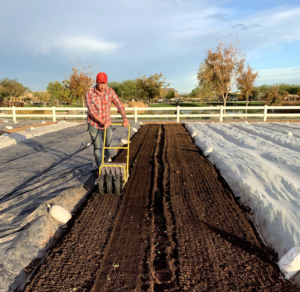In this video, the Urban Farmer Curtis Stone shows how he uses the JP-1 Jang seeder to seed a single bed with two kinds of crops.
“The Jang seeder is very simple to use, although, like any good garden tool, there are many fine adjustments a grower can make to optimize its use.“
Urban Farmer Curtis Stone

In this specific situation, Curtis was planning to seed all the beds in his tunnel with lettuce, but since he ran out of lettuce seeds, the bed ended up vacant and unplanted for a while, covered with landscape fabric.
During that time, some weed seeds had germinated, so Curtis flame-weeded the bed to clear it up. Using the hand flame weeder took longer than the larger, multi-row flame weeder, but it was more precise, especially since the nearby beds already had crops growing in them.
After weeding, the bed was a bit uneven. But this isn’t a cause for concern with the Jang.
“That’s one of the things that I love about the Jang Seeder,” Curtis said.
Beds don’t need to be perfect for the Jang to plant into.
Because this bed was inside a greenhouse, it was 24 inches instead of the usual width of 30 inches. The Jang seeder is adaptable to changes with in-row spacing; it would be difficult to do this with the less-flexible six-row seeder.
Seeding Techniques for the Jang Seeder
Here are six seeding techniques for the Jang:
- Change in-row spacing. Being able to change in-row spacing means more options for different bed sizes and different crop choices.
- Use the Jang to plot out your rows. Before seeding, you can run the Jang down the bed and make a mock row to get an imprint of the spacing you want.
- Changeable rollers. The same rollers can be used for similar-sized seeds. You can also change rollers to seed more densely or less densely. Curtis usually uses the F24 to seed tatsoi and red Russian kale, but in the summer, when crops grow faster, he uses the X24 roller for a wider seeding density so that the crops don’t choke each other out.
- Always do the outside rows first. This makes it easier to get the spacing right, especially when eyeballing the rows.
- Split the difference. After doing the outside rows, keep splitting the difference between rows. This helps to even out the spacing. Curtis finds that doing odd numbers for rows works best with the Jang.
- Pay attention to the wheel imprints. The wheel width of the Jang is almost 2 inches. When Curtis plants at tight spacings, the wheel imprints overlap by about ¾ to 1 inch. This may seem tight, but the Jang drops its seeds in a very fine line, which means you’ll always have about 1 to 1-½ inches of play that you can overlap with the wheel imprint on the bed.
Be careful and remember where you’ve gone. As you go along, the soil that gets pushed away from the back row will overlap with the row you left behind.
With these seeding techniques in mind, you’ll be able to seed perfect rows with the single-row Jang seeder.
For even more precision with multi-row seeding, take a look at the JP5 Jang seeder, which seeds five perfectly spaced rows right next to each other.
Relevant Links
Jang Seeder Grower’s Notes | Jang Seeder Crop Seeding Chart | How to Choose the Right Jang Seed Roller



